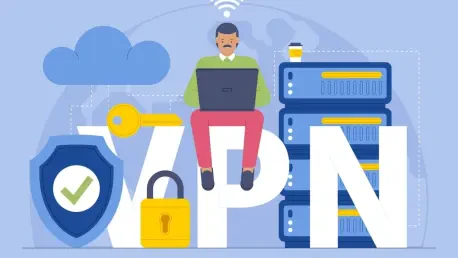I’m thrilled to sit down with Matilda Bailey, a renowned networking specialist with deep expertise in cellular, wireless, and next-generation solutions. With a career dedicated to navigating the evolving landscape of cybersecurity, Matilda brings a wealth of knowledge on how companies respond to breaches and secure critical systems. Today, we’ll dive into a recent security incident involving a major firewall provider, exploring the nature of the attack, its impact on customers, and the steps being taken to mitigate risks. Our conversation will touch on the technical intricacies of the breach, the challenges of remediation, and broader lessons for network security.
How did this recent security incident unfold with the firewall provider, and what was the initial point of access for the hackers?
This incident involved hackers gaining unauthorized access to backup firewall preference files stored in a cloud service. These files, while not the primary systems, are critical as they contain configurations and credentials that could be exploited. The attackers used a series of brute force attacks, essentially trying countless combinations to crack passwords or access keys until they succeeded. It’s a methodical, persistent approach that often targets weaker security setups or misconfigurations in cloud storage.
What specific information was compromised in these backup files, and how significant is the risk to customers?
The compromised files included encrypted credentials along with other configuration data that could potentially allow attackers to target the associated firewalls. While less than 5% of customers were affected, the risk is still substantial because even encrypted data, if paired with other information, might give attackers a foothold to launch further attacks. Thankfully, there’s no evidence yet of the stolen data being leaked or misused online, but the potential for harm necessitated swift action.
Can you explain what a brute force attack entails in this context, and how it differs from other types of cyber threats?
A brute force attack is essentially a trial-and-error method where attackers use automated tools to guess passwords or encryption keys by trying every possible combination. In this case, it was aimed at accessing the backup preference files. Unlike ransomware, which locks systems and demands payment, or phishing, which tricks users into giving up credentials, brute force relies on sheer computational power and time. It’s often successful when passwords are weak or when systems lack additional protections like multi-factor authentication.
What steps has the company taken to address this breach and support affected customers?
The company acted quickly by notifying the potentially affected customers and providing them with updated preference files to import into their firewalls. These new files were created from the latest backups in cloud storage but have been modified to enhance security. They include randomized passwords for local users, reset bindings for two-factor authentication where enabled, and new IPSec VPN keys. The goal is to invalidate any compromised data and reduce the risk of further exploitation.
What kind of disruptions or challenges might customers face when implementing these new preference files?
Importing the new files isn’t without hiccups. For one, it will disrupt certain IPSec VPN connections until the new keys are manually configured on connected systems. Additionally, the active firewall will reboot during the process, triggering a temporary failover to a secondary firewall if one is in place. This can cause brief downtime or service interruptions, so customers need to plan the update during a low-traffic window to minimize impact.
For customers who opt not to use the provided files, what alternative measures can they take to secure their systems?
Customers who prefer not to use the new files can manually remediate their systems by resetting credentials and configurations. This involves updating passwords for commonly used features and ensuring VPN keys are refreshed. The company has provided detailed guidance on how to do this, accessible through their online portal. While manual remediation can be as effective, it requires more effort and a keen eye for detail to ensure nothing is overlooked.
How can customers determine if they’ve been impacted by this breach, and what resources are available to help them?
The company has made it straightforward for customers to check if they’re affected. All firewalls with preference files backed up to their online platform are potentially at risk, and they’ve offered a step-by-step guide to help users confirm their status. This guide, along with additional support resources, is available on their website. It’s a proactive approach to ensure transparency and empower customers to take necessary action.
Looking ahead, what is your forecast for the evolution of network security threats like brute force attacks in the coming years?
I expect brute force attacks and similar threats to become even more sophisticated as attackers leverage AI and machine learning to speed up their guessing games. We’ll likely see a rise in hybrid attacks that combine brute force with social engineering or exploit misconfigurations in cloud environments, which are increasingly common. On the flip side, I anticipate stronger defenses—think advanced behavioral authentication and zero-trust architectures—becoming standard to counter these risks. Companies and users alike will need to prioritize continuous monitoring and rapid response to stay ahead of the curve.









